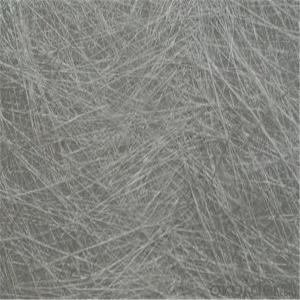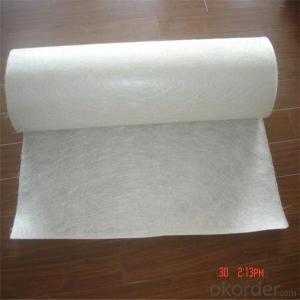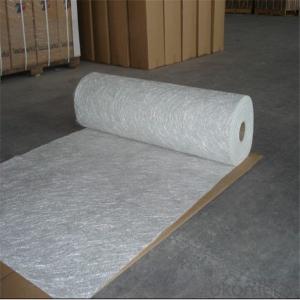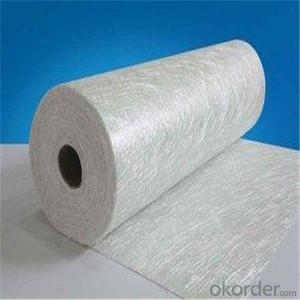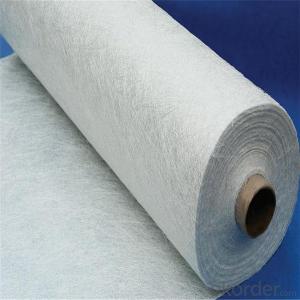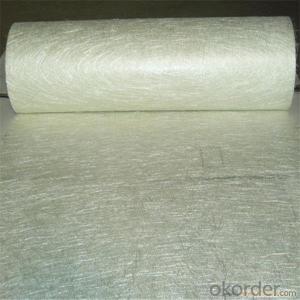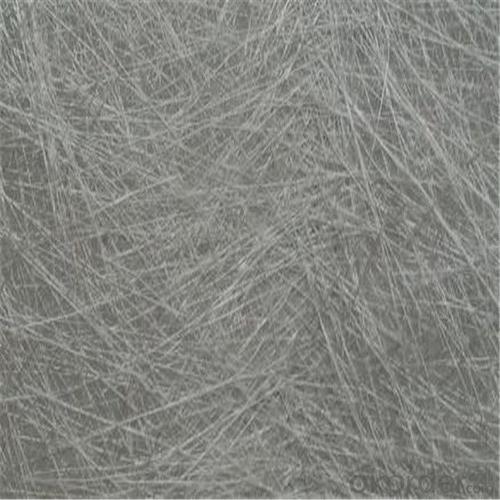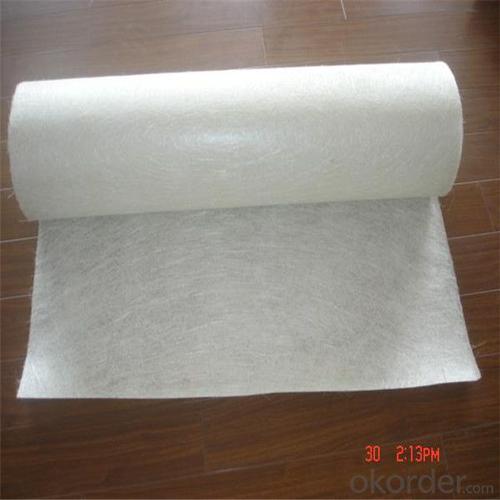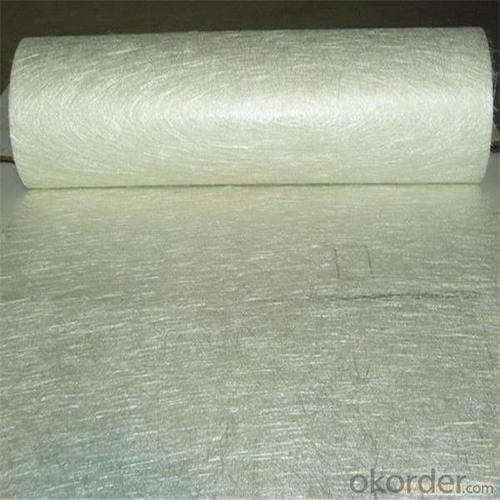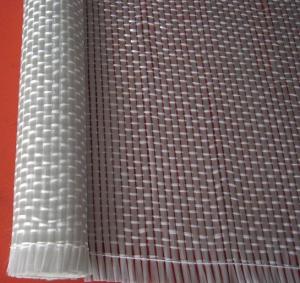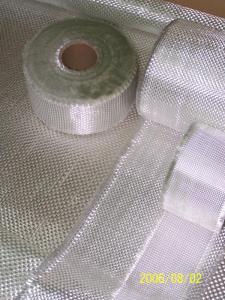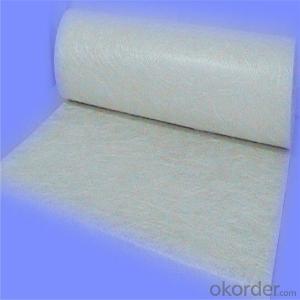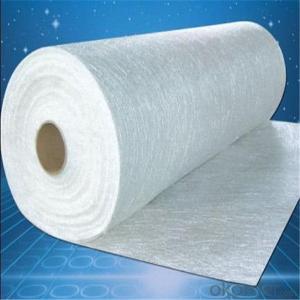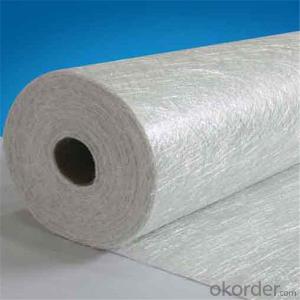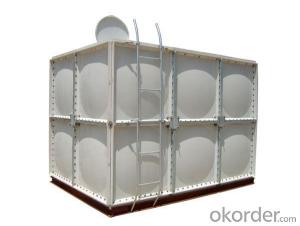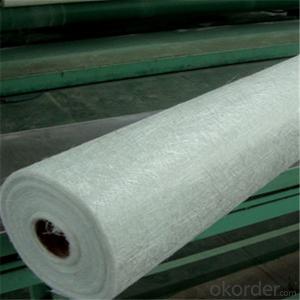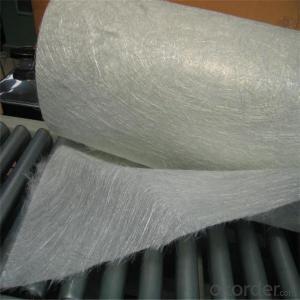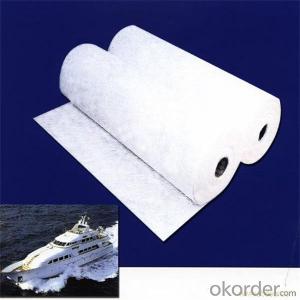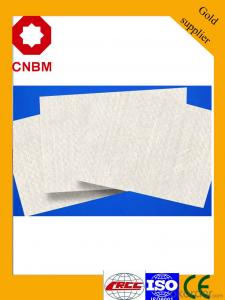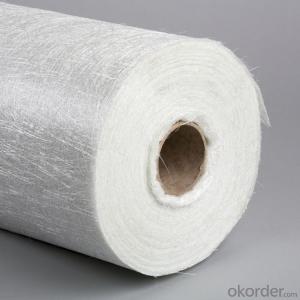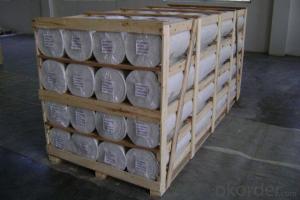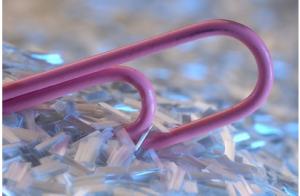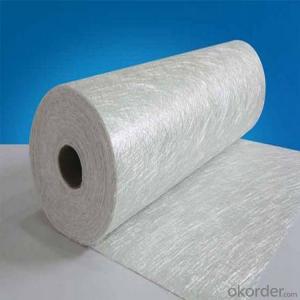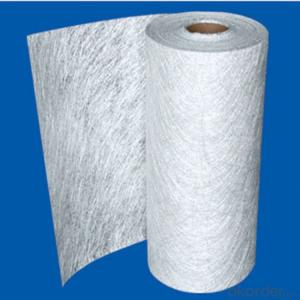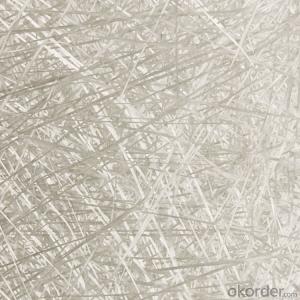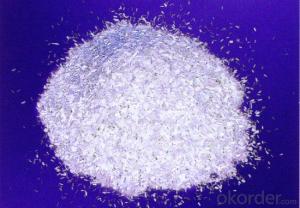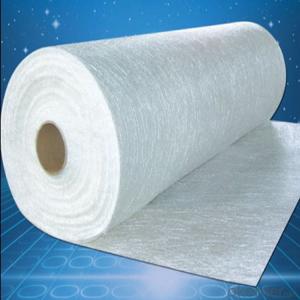Fiberglass Chopped Strand Mat Price for Fiberglass Stand Mat Factory
- Loading Port:
- Tianjin
- Payment Terms:
- TT OR LC
- Min Order Qty:
- 100 m.t.
- Supply Capability:
- 10000 m.t./month
OKorder Service Pledge
OKorder Financial Service
You Might Also Like
Quick Details
| Technique: | Chopped Strand Fiberglass Mat (CSM) | Dimensions: | 80g - 900g | Mat Type: | Continuous Filament Mat |
| Fiberglass Type: | E-Glass | Softness: | soft, very soft | Place of Origin: | Shandong, China (Mainland) |
| Brand Name: | cnbm | Model Number: | CSM | material: | fiberglass |
| Glass type: | E glass / C glass | Bond type: | powder or emulsion | Roll width: | 200 - 2600mm |
| Roll weight: | 28 - 55kgs | Density: | 225g/m2, 300g/m2, 450g/m2 | Certification: | ISO, CE |
Packaging & Delivery
| Packaging Details: | standand export packing . or packed as customer's need |
| Delivery Detail: | 10-20days after the contract is effective |
Specifications
Fiberglass Chopped Strand Mat
1.good combination fo resin
2.easy operation
3.good wet strength retention
Specification:
Fiberglass Chopped Strand Mat is an non-woven E- or C-glass fiberglass fabric manufactured by spreading continuous filament rovings of 50mm in length randomly and uniformly in combination with polyester binder in power form (or other binder in emulsion form). Powder or Emulsion fiberglass fiber chopped glass mat
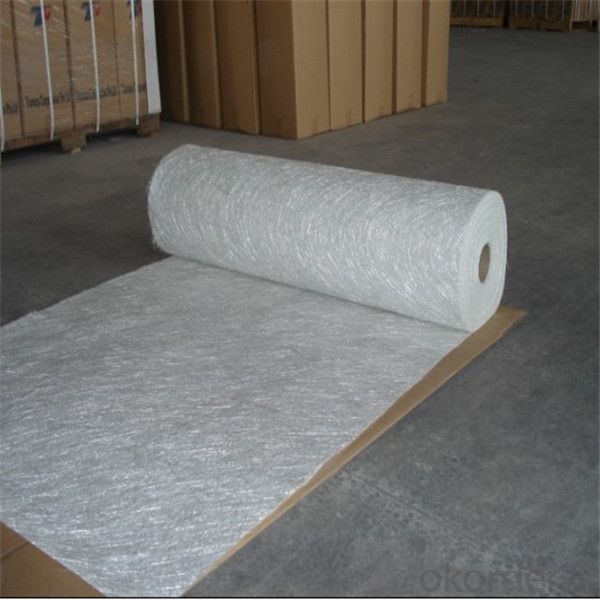
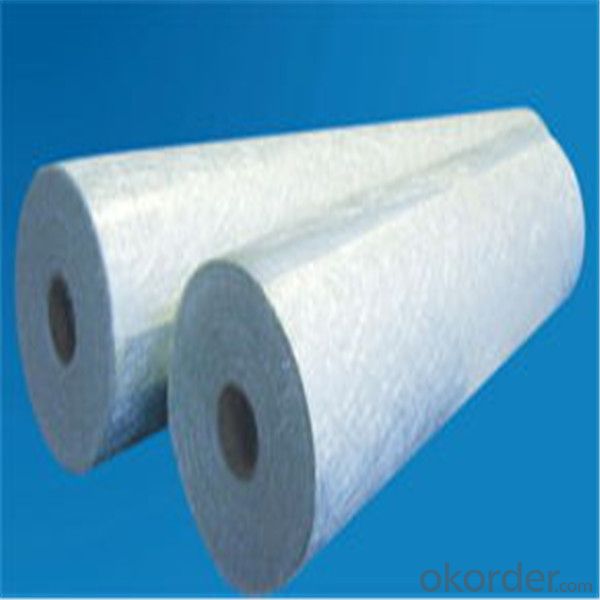
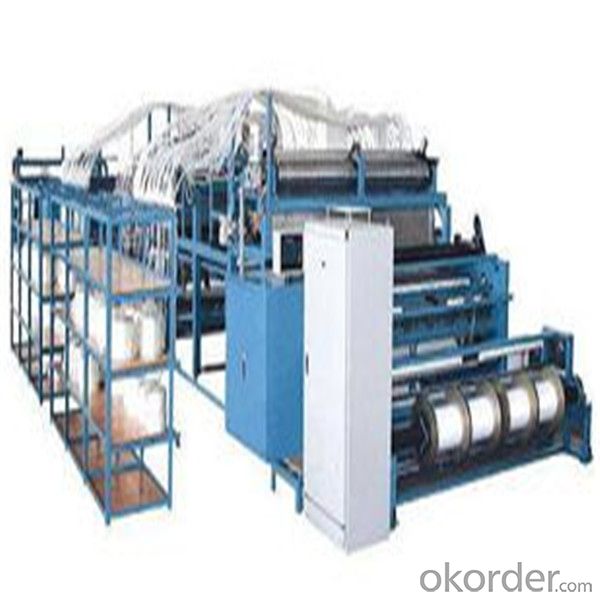
- Q: What is the impact resistance of fiberglass chopped strand?
- The impact resistance of fiberglass chopped strand is quite high. Fiberglass is known for its excellent strength and durability, and when it is chopped into smaller strands, it still retains these properties. The chopped strands are typically random in length and orientation, which helps to distribute impact forces throughout the material, making it more resistant to damage. This makes fiberglass chopped strand a popular choice in applications where impact resistance is important, such as in automotive parts, construction materials, and sporting equipment. Additionally, the use of fiberglass chopped strand in composites can enhance the impact resistance of the final product even further. Overall, fiberglass chopped strand is known for its ability to withstand high levels of impact and provide a reliable and durable solution for various industries.
- Q: How does the fatigue resistance of fiberglass chopped strand compare to other reinforcing materials?
- The fatigue resistance of fiberglass chopped strand is generally considered to be superior to many other reinforcing materials. Its high tensile strength and flexibility allow it to withstand repeated stress and strain without significant degradation or failure. Additionally, fiberglass chopped strand has excellent resistance to corrosion, moisture, and UV radiation, which further enhances its durability and longevity.
- Q: Can fiberglass chopped strand be used in water storage tanks?
- Fiberglass chopped strand can indeed find utility within water storage tanks. This material, known for its robustness and durability, boasts resistance against corrosion and can endure even the harshest environmental conditions. Its exceptional qualities, such as its high tensile strength, lightweight nature, and ability to withstand chemical exposure and UV radiation, make it a frequently chosen option for the construction of water storage tanks. The chopped strand variant of fiberglass is often employed during the manufacturing process of fiberglass-reinforced plastics (FRPs), which are extensively utilized within water storage tanks. Typically, these chopped strands are combined with a resin matrix, resulting in a composite material that significantly enhances the tank's strength and structural stability. Furthermore, fiberglass's impermeability renders it an ideal choice for averting water leakage and contamination. All in all, fiberglass chopped strand is a prevalent and fitting material for the creation of water storage tanks.
- Q: What is the shelf life of fiberglass chopped strand?
- The shelf life of fiberglass chopped strand can vary depending on various factors such as storage conditions, packaging, and the specific type of fiberglass used. In general, fiberglass chopped strand has a relatively long shelf life and can typically be stored for several years if proper precautions are taken. When storing fiberglass chopped strand, it is important to keep it in a dry and well-ventilated area, away from direct sunlight and extreme temperatures. Moisture can cause the strands to stick together or degrade over time, so it is crucial to protect it from any sources of water or high humidity. Additionally, the packaging of fiberglass chopped strand plays a significant role in preserving its shelf life. It is recommended to keep the material in its original packaging or transfer it to tightly sealed containers, such as plastic bags or moisture-resistant drums, to prevent any moisture ingress. Different types of fiberglass chopped strand may have specific storage requirements, so it is advisable to refer to the manufacturer's guidelines or specifications for the particular product in question. By following the recommended storage conditions and packaging guidelines, the shelf life of fiberglass chopped strand can be extended, ensuring its optimal performance when used in various applications.
- Q: Can fiberglass chopped strand be used in consumer product applications?
- Yes, fiberglass chopped strand can be used in consumer product applications.
- Q: Can fiberglass chopped strand be used in composite manufacturing processes?
- Indeed, composite manufacturing processes do involve the use of fiberglass chopped strand. Chopped strand refers to fiberglass that has been cut into shorter lengths, typically measuring 1-3 inches. This particular form of fiberglass is frequently utilized as a reinforcing substance in composite manufacturing. It is combined with a resin matrix to create a composite material that is both robust and lightweight. To evenly distribute the chopped strand throughout the resin matrix, it can be done either manually or with the aid of specialized equipment. Afterward, the resin matrix undergoes a curing process, resulting in the formation of a sturdy and long-lasting composite material. The fibers within the chopped strand provide reinforcement to the composite, thus enhancing its mechanical properties, including strength and stiffness. The application of chopped strand is commonly found in various processes such as hand lay-up, spray-up, and filament winding. Its versatility allows it to be utilized in a wide array of composite applications, ranging from automotive parts and aerospace components to marine structures and construction materials. To summarize, fiberglass chopped strand is widely employed in composite manufacturing processes. It serves to reinforce composite materials, thereby improving their mechanical properties, and rendering them suitable for diverse applications.
- Q: Can fiberglass chopped strand be used in aerospace interior components?
- Fiberglass chopped strand is indeed applicable for aerospace interior components. This lightweight and versatile material possesses exceptional strength and durability, making it widely utilized across various industries, including aerospace. The aerospace sector demands interior components that are both lightweight and capable of withstanding the rigorous conditions of flight. Fiberglass chopped strand fulfills these requirements, as it is lightweight and boasts high tensile strength. It finds extensive use in the production of panels, seat backs, overhead bins, and cabin partitions. Notably, fiberglass chopped strand exhibits exceptional fire resistance properties, which are of utmost importance in aerospace applications. It successfully adheres to the stringent fire safety regulations and standards set by aviation authorities. Moreover, the processing of fiberglass chopped strand is relatively straightforward, ensuring efficient and cost-effective manufacturing processes. It can be molded into diverse shapes and sizes, making it ideal for intricate aerospace interior designs. In summary, fiberglass chopped strand is an ideal material for aerospace interior components due to its lightweight nature, high strength, fire resistance, and ease of processing. Its utilization in the aerospace industry contributes to the safety, performance, and comfort of both passengers and crew members during flights.
- Q: Is fiberglass chopped strand compatible with other reinforcement materials?
- Yes, fiberglass chopped strand is compatible with other reinforcement materials. It can be combined with other materials such as carbon fiber, Kevlar, or natural fibers to create hybrid composites with enhanced mechanical properties. The combination of different reinforcement materials can lead to improved strength, stiffness, and impact resistance in the final composite product. Additionally, fiberglass chopped strand can also be used in conjunction with thermoplastic or thermosetting resins to create composite materials that are suitable for various applications in industries such as automotive, aerospace, construction, and marine.
- Q: How is fiberglass chopped strand used in the telecommunications industry?
- Fiberglass chopped strand is widely used in the telecommunications industry for various applications. One of the main uses of fiberglass chopped strand in this industry is for reinforcing the plastic components of communication cables. These cables are responsible for transmitting data, voice, and video signals over long distances. The fiberglass chopped strand is mixed with a thermoplastic resin, such as polyethylene or polypropylene, to create a composite material. This composite is then used to manufacture the outer protective layer or jacket of the communication cables. The fiberglass reinforcement adds strength and durability to the cables, allowing them to withstand harsh environmental conditions, such as extreme temperatures, moisture, and UV radiation. Additionally, fiberglass chopped strand is used in the production of fiber optic cables, which are essential for high-speed data transmission and internet connectivity. In fiber optic cables, the chopped fiberglass strands are impregnated with a UV-resistant resin and wrapped around the glass fibers to provide mechanical protection. This reinforcement helps prevent damage to the delicate glass fibers, ensuring reliable and efficient transmission of data signals. Furthermore, fiberglass chopped strand can be used in the manufacturing of telecommunication equipment, such as antenna radomes. Radomes are protective covers that enclose antennas and protect them from external elements. The chopped fiberglass strands are embedded in a resin matrix to create a lightweight and durable material that offers excellent electromagnetic transparency. This allows the antennas to transmit and receive signals without interference, ensuring optimal performance. In summary, fiberglass chopped strand plays a crucial role in the telecommunications industry by reinforcing communication cables, fiber optic cables, and telecommunication equipment. Its high strength, durability, and resistance to environmental factors make it an ideal material for ensuring reliable and efficient communication networks.
- Q: What are the typical weight percentages of fiberglass chopped strand used in composites?
- The typical weight percentages of fiberglass chopped strand used in composites can vary depending on the specific application and desired properties of the composite material. However, in general, the weight percentage of fiberglass chopped strand in composites is typically between 10% to 40%. Lower weight percentages, such as 10% to 20%, are commonly used when the main goal is to enhance the tensile strength and stiffness of the composite material. This is particularly useful in applications where high strength is necessary, such as in structural components for aerospace or automotive industries. Higher weight percentages, ranging from 30% to 40%, are often used when the primary objective is to improve impact resistance and durability of the composite. This is typically seen in applications where the material needs to withstand high levels of stress or impact, such as in sporting goods or marine applications. It is important to note that these weight percentages are just general guidelines and can vary depending on the specific requirements and manufacturing processes involved. Additionally, other reinforcing materials or fillers may be added to the composite, further affecting the weight percentage of the fiberglass chopped strand. Ultimately, the selection of the weight percentage depends on the desired characteristics and performance of the final composite product.
Send your message to us
Fiberglass Chopped Strand Mat Price for Fiberglass Stand Mat Factory
- Loading Port:
- Tianjin
- Payment Terms:
- TT OR LC
- Min Order Qty:
- 100 m.t.
- Supply Capability:
- 10000 m.t./month
OKorder Service Pledge
OKorder Financial Service
Similar products
Hot products
Hot Searches
Related keywords
